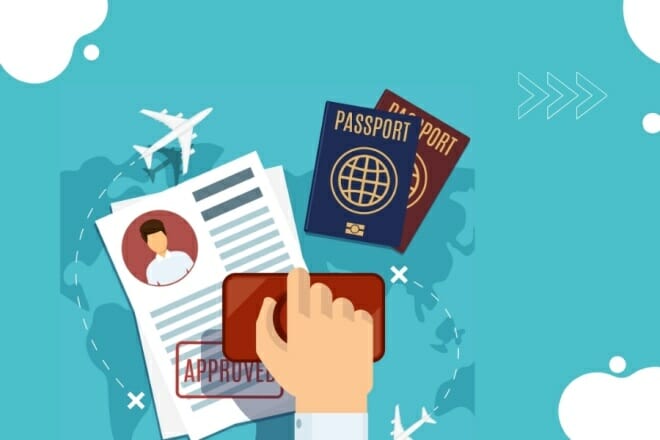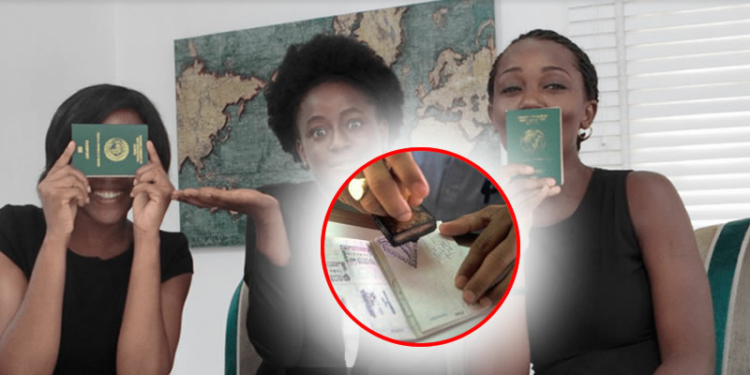The F-1 student visa is a non-immigrant visa that allows students from other Nations can study in institutions in the US. This means this Visa is only valid throughout the study. The institution to study at must have been certified by the Student and Exchange Visitor Program (SEVP).
The F1 visa is the most popular type of student visa for students seeking to study at a US university or college. You can only apply for your F-1 visa after an accredited US institution accepts your application.
Part-time work is very restricted on an F1 visa. You may be able to work on-campus at your chosen university, however, hours are limited and jobs are in high demand.
F-1 Visa Requirements
To be eligible for the F-1 student visa, you must meet these requirements for your application to be accepted:
- The college or the university where you plan to study needs to be approved by SEVP Immigration & Customs Enforcement.
- You must be enrolled as a full-time student at the institution while your academic term is in session.
- You must meet the required English language proficiency score of the institution you are attending or be enrolled in courses that will help you improve your English proficiency.
- You must prove you have sufficient funds available to finance your studies and living expenses while in the US.
- Your passport should be valid for US travel for at least six months after your program completion date.
- You are required to have a residence in your home country to return to following the completion of your degree.
Documents needed for your F1 application:
- Certificate of Eligibility for non-immigrant student (I-20)
- Receipt from your SEVIS fee
- Receipt from the online visa form (DS-160) for a non-immigrant student.
- Passport with a validity date at least six months beyond your intended period of stay in the United States
- Any old passports you may have
- Documents that prove your financial situation or any financial support you will have during your studies
- Two recent color photos of yourself, one physical, one digital. These must also meet US immigration’s image requirements
- Transcripts, test scores, qualifications, or certificates from schools you have attended
- The documents will also need to be taken to your visa interview.
How to Apply for an F1 Visa?
To apply for the F1 visa you must go through the following steps:
Get your admissions documents.
You must be accepted onto an educational program from a SEVP institution, your chosen institution’s international student office will send you an I-20 form – “Certificate of Eligibility for Nonimmigrant Student Status”. This form needs to be kept safe because, without it, you can’t go for your visa interview.
Apply online through the DS-160 form.
After you get your Form I-20, you can start the usual application process. This includes filing the DS-160 form online with the necessary information about your visa status.
Pay the SEVIS I-901 fee.
Student and Exchange Visitor Information System fee (SEVIS I-901) which is at present USD 350 ($350) needs to be paid. Students are recommended to pay this fee before they start filling their Visa Application Form (DS 160) as the receipts of the payments are sent by post and might take up to 15 days to arrive.
Pay the application fee
The Visa Application form (DS 160) fee for the student visa is $160. You must pay this fee and get the receipt, which you will need later for your interview documents. You’ll also need to upload a photo of yourself that meets specific requirements and provide any other requested documents.

Schedule your F1 visa interview
The F1 Visa interview is a mandatory step before you get your student visa. After filing the DS-160 form and paying the application fees, you will need to schedule your interview. When you schedule it, you will receive an interview appointment letter which you will need later on in the application process. You are advised to schedule it as early as possible, due to the heavy applications in the US Embassy.
Attend the student visa interview
When you go to attend the visa interview, you should prepare your file with the required documents for the US student visa. You will be asked questions, which will mostly be about your intentions to study in the US and the institution you are going to.
Successful Interview
If your visa is approved, you are allowed to depart for the US 30 days before your program begins. You cannot enter the US any earlier than that.
Note: When your visa is approved, it might be for the full time that you will be in school in the US, or for less. If your degree program is 3 years and you only get the visa for 2 years, you should then later apply to renew it.
Student Visa Renewal
If you are renewing your visa you should follow the same procedure. You might be able to waive the interview on the reason that you have already done it once and you intend to continue your education for the remaining years to get your degree.
About Form I-20.
Certificate of Eligibility for Nonimmigrant Student Status form also called Form I-20, states the amount of money you need to finance your education and live in the US. This Proof of funds must be submitted. These documents include:
- Bank statements for the last 3 years
- Tax records for the last 3 years
- If you have received a scholarship, you also need to submit proof of it
- If you are supported or sponsored by someone else in the US, you will need to submit Form I-134, Affidavit of Support, and bank statements for the last three years of that person.
- If you are funding your US education through a loan, you must also show proof of the approved loan.
- You must also your salary history (Pay Stubs) of previous employment.
You should pay a semester’s or a year’s worth of tuition, but it is not mandatory.
What to expect at your F1 visa interview
The F1 visa interview is in English and happens in front of a visa officer at a US embassy or consulate. The interview is usually straightforward and quick, and may only last around five minutes. The F1 visa interview questions you are asked during the interview vary but often concern your chosen program, academic achievements, finances, post-graduation plans, and choice of university. The interviewer will try to assess whether you intend to return to your home country after you complete your degree.
You should tell them you have no plans to remain in the US when your program finishes.
What to do if declined an F1 visa
If you are declined an F1 visa and you want to apply again, you will need to start the process from the beginning. However, You won’t need to pay the SEVIS fee again, but any applicable fees will need to be paid a second time.
You’ll be told the reason that you were denied, and if you can amend any issues, you may have a better chance next time around.









Discussion about this post